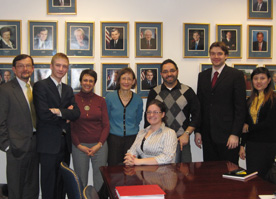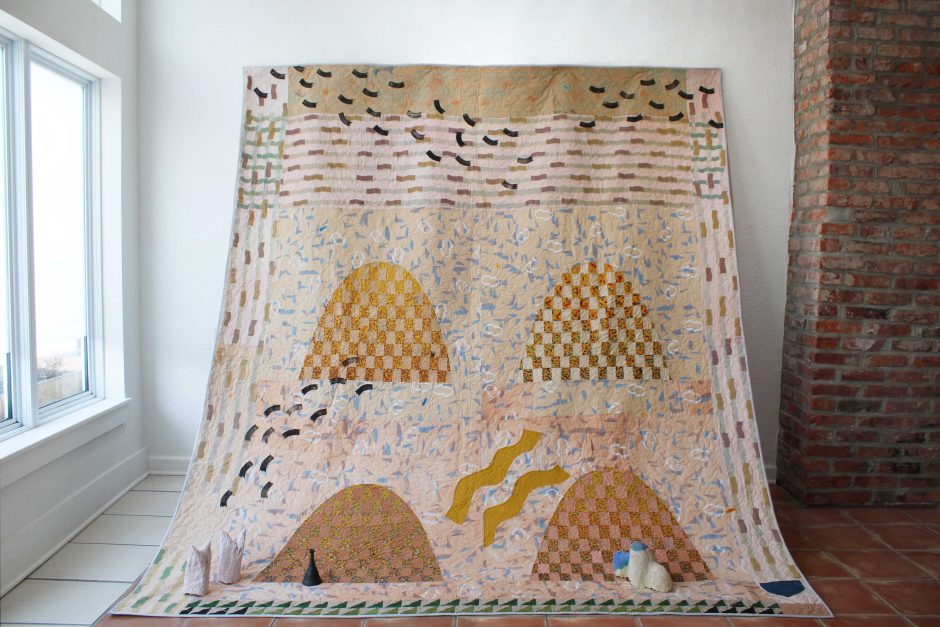Students analyze H1N1 pandemic response in D.C.
In the spring of 2009, the H1N1 flu pandemic elicited an emergency response from health officials around the globe. Throughout the fall, nine Cornell students studied the outbreak from a variety of angles, including historic accounts of previous pandemics and scientific papers on the H1N1 virus, guided by Professor of Biology Barbara Christie-Pope.

In February 2010, four of these students went even deeper into the scientific and public policy aspects of the issue, conducting one of the earliest comprehensive assessments of the pandemic response.
The heart of their independent study block was a week-long visit to Washington, D.C., where the students interviewed key government health officials and a range of other medical experts. Accompanied by Christie-Pope and Cornell President Les Garner, they visited at length with representatives of several organizations, including:
- U.S. Department of Health and Human Services
- U.S. Department of Homeland Security
- National Security Council
- The Institute of Medicine
- U.S. Senate Committee on Health, Education, Labor, and Pensions
- National Association of Chain Drug Stores
Based on these interviews and extensive readings conducted prior to the trip, the students spent a week back on campus putting together individual reports and a group presentation on their analyses. They noted a number of ways in which the response to pandemic flu might be improved, including enhanced guidelines and accountability at the state level; improvements in vaccine manufacturing and distribution systems; greater international surveillance of disease outbreaks; and a better structure for coordinating the many entities involved in massive, rapid responses.
“I was continually startled by how many agencies and departments were involved in threat response,” said Eli Wade-Scott. “We spoke to three people from the Department of Homeland Security alone that are responsible for various aspects of foreign health management. From reading the response plan and from numerous interviews, it became clear that there are probably hundreds of people who are responsible for separate pieces of threat preparedness and response.”
Christie-Pope said she was surprised at how willing officials were to share details about what didn’t go according to plan in the H1N1 response. She also noted that officials in Washington were surprised and interested to hear the students’ stories about local problems in vaccine distribution–a system they viewed as a “black box” once the vaccine was delivered to the states. She said they were also keenly interested in the results of the students’ research as it would help give them insights into areas of the response beyond their own agencies.
“How prepared are we for the next pandemic?” asked Yuri Mitchell during the group’s presentation on campus. “We don’t really know because the system wasn’t stressed this time.”
Mikelle Wortman said that the course brought together her interests in medicine and public policy, and also exposed her to a variety of careers and contacts. “I was able to discover careers that were incredibly appealing to me, and I was able to learn how policy makers were able to arrive at their current positions through their experiences in medicine and politics,” she said.
The fall course and independent study opportunity were supported by Cornell’s Dimensions program and the Berry Center for Economics, Business and Public Policy.



